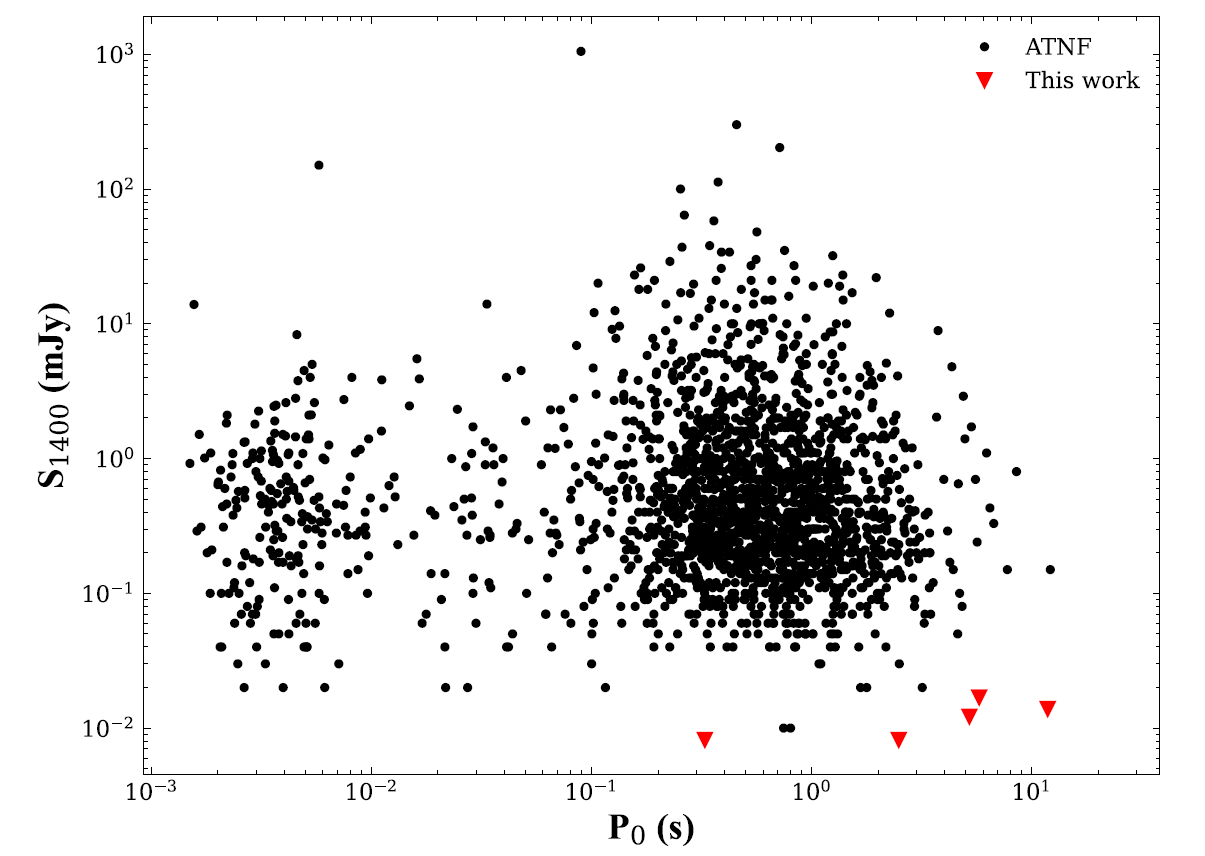

Searching for Radio Signals from Magnetars with FAST
Recently, Ph.D. student BAI Juntao from the Xinjiang Astronomical Observatory, under the supervision of Prof. WANG Na, conducted a comprehensive search for radio emissions from four magnetars and one magnetar-like pulsar using the Five-hundred-meter Aperture Spherical radio Telescope (FAST). The study revealed the "radio-quiet" characteristics of these extreme celestial objects. The results are published in The Astrophysical Journal (ApJ, 2025, 979, 122).
The research team utilized FAST's unparalleled sensitivity to observe four magnetars (SGR 0501+4516, Swift J1834.9–0846, 1E 1841–045, and SGR 1900+14) and the magnetar-like pulsar PSR J1846–0258 at 1250 MHz. These observations were conducted using the central beam of FAST’s 19-beam receiver, with a total bandwidth of 500 MHz and a time resolution of 49.152 s.
To analyze the data, the team employed the PRESTO software package to mitigate radio frequency interference (RFI), dedisperse signals, and perform both periodic pulsation searches and single pulse detections. Using previously measured X-ray timing results, they extrapolated the spin periods of these sources and searched for periodic signals. Additionally, blind searches in the Fourier domain were performed using accelsearch, and a comprehensive search for dispersed single pulses was conducted with single pulse search.
Despite the deep observations, no periodic radio pulsations or single pulses were detected. The derived strict upper limits on flux density at 1250 MHz (S1250 < 16.9 Jy) are significantly lower than the flux densities of known radio pulsars (see Figure 1). This suggests that these objects may be intrinsically radio-quiet or their radio beams are not favorably aligned with Earth. Notably, PSR J1846–0258 was observed one month after its 2020 X-ray outburst, providing a crucial constraint on the timing of potential transient radio emissions.
This study provides valuable insights into magnetar radio emission mechanisms and offers guidance for future radio surveys of high-magnetic-field neutron stars. Continued monitoring of magnetars post-outburst is essential to further investigate their radio behavior.

The upper limits on flux density for the four magnetars and the magnetar-like pulsar are lower than measured radio flux densities (at 1.4 GHz) of pulsars.
Attachment Download: